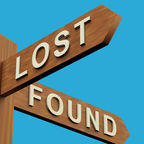2011 (1)
2016 (1035)
2017 (752)
2018 (978)
2019 (385)
2020 (175)
2021 (235)
2022 (101)
2023 (983)
2024 (800)

已有 77 次閱讀 2017-11-2 10:56 |個人分類:Life style|係統分類:人物紀事 推薦到群組
Reading Steve Jobs biography, I got some deep understanding about how/where he gained insight by practicing Zen - barefoot, fast, vegetarian lifestyle, simple need, regular meditation, less shower (huge body odor around him), for better creativity of making Apple computers, iPhone, iPad, and inventing that mouse command, creating fonts (MicroSoft copied that list of Fonts we have now), founding that Pixar cartooning movie company, as he claimed. How many of you can do that?
It's much easier said than done, for a regular daily basis. For one, I can't function when hungry, never mind fasting.
"您吃了嗎?" We Chinese greeting each other, saying the first word - it's genetic. Don't you think so?
"It enhances creativity. Awe increases both flexibility and our ability to see things from new perspectives; both associated with being more creative. There are endless examples of awe-inspired poems, love sonnets, paintings, and novels."
Zen Buddhism, barefoot, fasting, meditation, anyone wants to start for better creativity? You know it, but can you do it?
Robotic translation:
閱讀史蒂夫·喬布斯的傳記,我深深地了解了如何/通過練習禪宗 - 赤腳,快速,素食的生活方式,簡單的需求,定期的冥想,更少的淋浴(身體周圍的巨大的身體氣味),獲得洞察力,為更好的創造力使蘋果電腦,iPhone,iPad,並發明了鼠標命令,創建字體(MicroSoft複製了我們現在的字體列表),創建了皮克斯漫畫電影公司,他聲稱。你有多少人可以做到這一點?
這是說,做的容易一點,定期每天。一方麵,饑餓時不能運作,不要禁食。
“你吃了嗎?”我們中國人互相問候,說出第一個字 - 這是遺傳。你不覺得嗎
“它增強了創造力,我們增加了靈活性和從新視角看待事物的能力;兩者都與創造力相關聯,有無數的令人敬畏的詩歌,愛情,電影,繪畫和小說的例子。
禪宗佛教,赤腳,禁食,冥想,任何人都想開始更好的創造力?你知道嗎,但是你能做到嗎?
** https://www.psychologytoday.com/blog/the-blame-game/201710/zen-and-the-art-awe
* .††Heritage ^^^^^^^^^^^^
鏈接地址:http://blog.sciencenet.cn/blog-847277-1071424.html
http://blog.sciencenet.cn/blog-847277-1083556.html
上一篇:毛澤東接見過多位科學家, 為之寫詩詞屈指可數 *









In thinking of healthy activities, regular exercise and eating “superfoods” like kale and broccoli come to mind. Yet activities that directly engage our emotions may possess even greater health and wellness benefits. Recent research points to particular benefits of the super-emotion: awe. Feeling awe is associated with emotional, psychological, physical and spiritual health and happiness. A lot of big effects for such a little word.
What exactly is awe? Albert Einstein referred to awe as “The source of all true art and science” (1). Awe is one of those words that we all understand experientially, yet may not have an easy time defining.
How’s this? Awe is an overwhelming feeling associated with vastness, reverence, wonder, and at times a touch of fear; a sense of transcending day-to-day human experience in the presence of something extraordinary. Awe is inspired by objects or events that are considered to be greater than yourself such as genius, great beauty, extreme power, and impact, or sublimity. According to Keltner and Haidt (2), awe consists of two qualities: perceiving vastness (the stimulus is far greater than ourselves) and cognitive accommodation (our minds can’t easily assimilate the stimulus, so we instinctively take in as much information about it as we can).
Think of the intense, yet deeply satisfying feeling you have when gazing up at the night sky and seeing the milky way galaxy, or perhaps the northern lights. Being in the presence of Michelangelo’s David. The Sistine Chapel. Watching a new world record being set, or a no-splash Olympic high dive. Witnessing the birth of an animal in the wild. Seeing fireworks. Having your infant baby reach out to touch you. Niagara Falls. The Grand Canyon. Receiving an over-the-top generous gift from a friend at a time of need. Awe is often thought of as a religious experience, yet this emotion is readily accessible to non-believers as well. A walk down a nature path can become both a spiritual and awe-inspiring event.
Within psychology, happiness, sadness, fear, anger, disgust, and surprise have long been the six most-studied emotions. Thanks to recent, innovative research, awe is now making the transition from being thought of as an emotional luxury item, to an essential component of our emotional needs.
While research in this area is rather new, Einstein was a pioneer in identifying the importance of awe (1). “He to whom this emotion is a stranger, who can no longer pause to wonder and stand rapt in awe, is as good as dead; his eyes are closed.”
A leading researcher in the field of awe is Arizona State University’s social psychology professor, Michelle Shiota (link is external). Shiota runs the SPLAT lab (link is external), Shiota Psychophysiology Laboratory for Affective Testing. The Shiota lab uses an integrative physiological, behavioral, cognitive, and evolutionary approach to study the nature and implications of human positive emotions including awe (3). Some important findings from her research highlight striking differences among discrete positive emotions in terms of physiology, cognition, nonverbal expression, and motivation. Perhaps not surprisingly, awe stands out from the pack in several ways.
10 Benefits of Awe
It promotes cognitive changes that reduce reliance on existing knowledge and assumptions, which we often use as shortcuts when perceiving the world around us. For example, while most positive emotions increase our reliance on “internal scripts” in attending to commonly occurring events (such as going out to a romantic dinner), Shiota and recent lab graduate Alex Danvers have shown that awe has the opposite effect. This means that experiencing awe helps us encode and process new information from the environment, rather than seeing only what is familiar and expected (4). The effect is somewhat like mindfulness, helping us to process novel stimuli from the environment with an open, non-judgmental mind. The implications for this research are far-reaching and ground-breaking.
It facilitates physiological alterations that soothe and relax the body, as well as the mind (5).
It increases curiosity. Awe enhances our ability and desire to take in novel information from the environment. It is thus associated with increasing curiosity and having a greater desire to explore.
It brings people together. In appreciating the vastness of an experience, we realize that we are part of a bigger picture(3). In doing so, me becomes we. Awe inspires collaboration and cohesiveness.
It promotes mindfulness. Unlike fear or excitement, which cause an adrenaline rush and lead to running away from or toward the stimulus (“fight or flight”), an awe response is associated with stillness and attentiveness. This state of mind makes us more open to new information, and more receptive and situationally aware. Awe experiences, more so than other positive emotions, have also been shown to make people feel like time is expanded; you feel like you have more available time (6).
It makes us nicer. As we’ve all experienced, during times of awe, the self dissolves; it is bigger than us. What does this mean in the big scheme of things? Professor Paul Piff of UC Irvine has shown that this awe-induced small-self feeling is associated with increased ethical decision-making, generosity, prosocial helping behavior and decreased entitlement (7). People who experience awe more often are also more likely to give to strangers. As Professor Piff has stated, “awe arouses altruism.”
It improves physical health. Interleukin 6 (IL6) is an inflammatory marker associated with stress, depression, and cardiovascular disease. Research from Professor Jennifer Stellar at the University of Toronto (8) has shown that people who report more frequent positive emotions have lower levels of IL6, and of all positive emotions tested, awe is the strongest predictor of this effect. As these studies documented correlations, not necessarily causal effects, it remains possible that those with greater health and less stress were better able to experience positive emotions including moments of awe. However, the association is strong enough to suggest that frequent experience of awe may help improve physical health as well as mental well-being.
It enhances creativity. Awe increases both flexibility and our ability to see things from new perspectives; both associated with being more creative. There are endless examples of awe-inspired poems, love sonnets, paintings, and novels.
It inspires hope. While awe is not always easily accessible, it is always present and available. Knowing that we are at all times surrounded by the potential for awe in natural phenomena can be an incredible positive motivation and pick me up during down times.
It causes happiness. While awe is at times accompanied by some degree of fear, the majority of awe experiences are associated with positive affective states. The concomitant benefits of curiosity, creativity, flexibility, hope, mindfulness, as well physical, psychological and spiritual health can’t help but lead to great happiness!
In summary, awe invokes creative, curious, mindful, altruistic, flexible, open-minded, physical, psychological, and spiritual health and happiness. Sounds a lot like the benefits of Zen Buddhism...just a thought.
How hard is it to find awe? It has been suggested that people feel awe an average of two-and-a-half times per week, but people vary a great deal. We as a society are increasingly bound to the indoors and to the screens on our devices, less in touch with nature and less attentive to the goosebump-invoking wonders around us. It is hypothesized that this may be one of the reasons for the increasing incidence of depression among “civilized” societies. Ironically, a lack of awe can be awful!
Like other emotions, awe occurrences are not purely objective phenomena; they depend on how we choose to perceive and engage with the world around us. According to Professor Shiota, “How often you experience awe depends on your mindset: how open you are to the novel and unexpected in your environment; whether you choose to seek out extraordinary experiences; how much you attend to the wonder and beauty present in everyday life. These all help create moments of seeing the world as a beautiful and amazing place.”
Do yourself a favor—don’t wait for awe to find you. Seek awe!
References
(1) Albert Einstein, Living Philosophies, Simon and Schuster, New York, 1931
(2) Keltner D, Haidt J: 2003. Approaching awe, a moral, spriritual and aesthetic emotion.
(3) Shiota M: 2007, The nature of awe: Elicitors, appraisals, and effects on self-concept. Cognition and Emotion. 21, 944-953.
(4) Danvers AF, Shiota MN: 2017, Going off script: Effects of awe on Memory for Script-Typical and -Irrelevant Narrative Detail. Emotion. 17(6), 938-952.
(5) Shiota MN, Neufeld SL, Yeung WH, Moser SE, Perea EF: 2011, Feeling good: Autonomic nervous system responding in five positive emotions. Emotion. 11(6), 1368-1378.
(6) Rudd M, Vohs KD, Aaker J: 2012, Awe expands people’s perception of time, alters decision making, and enhances well-being. Psych Science, 23(10), 1130-1136.
(7) Piff P, et al. 2015. Awe, the small self, and prosocial behavior. J Pers Soc Psych, 108(6) 883.
(8) Stellar J, et al (2015). Positive affect and markers of inflammation: discrete positive emotions predict lower levels of inflammatory cytokines. Emotion. 15(2) 129-132